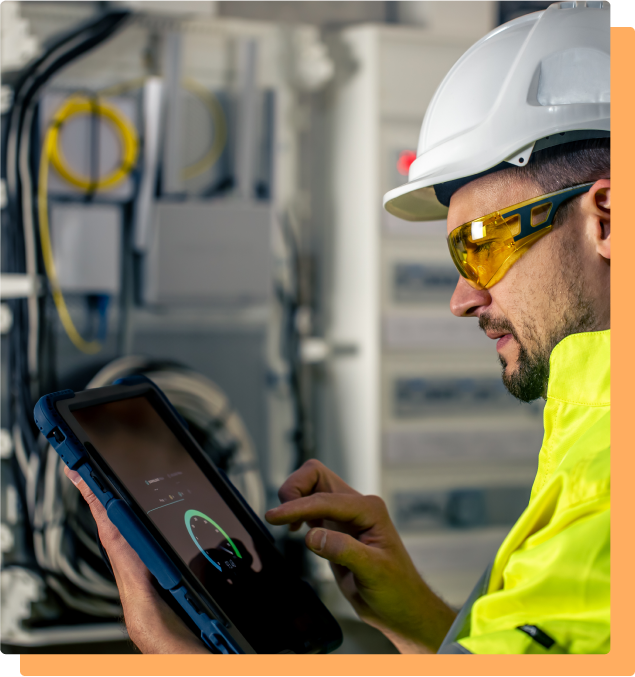
AKP Instruments and Consultants is a leading provider of hydrological services and environmental monitoring solutions, specializing in flood forecasting, river management, and sustainable water resource management. We leverage cutting-edge technology and a team of experts to provide precise data and actionable insights for clients across various industries.
A river sedimentation survey is a key process for understanding how sediments move and settle within rivers. It measures the type, amount, and distribution of sediments in the riverbed and water column. These surveys provide vital information for river management, infrastructure design, flood control, environmental protection, and ecosystem conservation. Using ADCP renting equipment makes these surveys faster, more accurate, and efficient for studying river sediment deposition.
Assessing Flood Risks: Sediment buildup can change a river’s depth, width, and slope, which may increase flood risks. Regular sediment deposition surveys help monitor these changes and guide effective flood control planning.
Maintaining River Capacity: Over time, sediment accumulation can reduce a river’s ability to carry water. With ADCP renting, surveys can track sediment levels, helping maintain proper water flow and avoid blockages.
Dam and Reservoir Management: Sedimentation in dams can reduce reservoir capacity, impacting water supply and energy generation. Regular river sediment survey data ensures timely maintenance and removal.
River Channel Upkeep: Sediment accumulation can block channels and affect bridges, weirs, and culverts. Using ADCP renting, engineers can monitor and manage riverbed sedimentation efficiently.
Tracking Sediment: Surveys measure how sand, silt, clay, and organic material move in a river. This helps understand sediment deposition in rivers and overall river morphology.
Erosion and Deposition: Monitoring sedimentation identifies areas of erosion or buildup, which is important for protecting riverbanks, infrastructure, and ecosystems.
Water Quality: Excess sediment can reduce water quality and affect aquatic life. Using ADCP renting helps detect problem areas and plan solutions.
Ecosystem Health: Sediment levels influence fish habitats and aquatic plants. Understanding river sediment deposition supports healthy ecosystems.
Turbine Efficiency: Sediment can damage hydropower turbines. Surveys using ADCP renting help manage sediment loads and protect equipment.
Long-term Sustainability: Monitoring river sediment surveys ensures hydropower projects remain efficient and safe over time.
Restoration Planning: Sedimentation surveys guide river restoration by identifying areas needing attention.
Sustainable Management: Understanding river sediment deposition helps balance human needs with natural ecosystems.
Climate Impacts: Sedimentation surveys track changes caused by altered rainfall, storms, or rising sea levels.
Future Planning: Regular ADCP renting surveys help manage evolving sediment patterns effectively.
A river sedimentation survey collects and analyzes sediment data using tools like sediment samplers, corers, and sonar-based equipment. ADCP renting provides modern solutions for fast and accurate measurements.
Sediment Sampling: Collecting samples at multiple points to study composition and concentration.
Hydraulic Profiling: Using acoustic devices to map riverbed topography and identify sediment buildup.
Flood and erosion control
Environmental monitoring
Infrastructure planning and maintenance
Hydropower efficiency
Detailed understanding of sediment dynamics
Helps manage floods and maintain river flow
Supports infrastructure and ecosystem conservation
Optimizes hydropower operations
In short, a river sedimentation survey is essential for tracking river sediment deposition and ensuring sustainable river management. Using ADCP renting equipment makes this process accurate, efficient, and reliable for planning, conservation, and environmental protection.
River cross-sections are fundamental tools for understanding the physical and hydraulic properties of a river. They are used in a wide range of applications, from flood management and discharge measurement to sediment transport and ecosystem conservation. By providing essential insights into how water flows and interacts with the river channel, these cross-sections help improve river management, infrastructure design, and environmental protection efforts. River surveys using ADCP cross section technology provide accurate and detailed data for these purposes.
An Acoustic Doppler Current Profiler (ADCP) is a modern and advanced tool used in hydrology and river engineering to measure water flow velocity and discharge. When used to collect data across a river, it can produce detailed ADCP cross sections, which are critical for understanding the river's flow dynamics, its depth, and velocity distribution.
Key Concepts:
River Cross-Section: This is a vertical profile of a river channel, showing its shape, depth, and width at a specific location. It is an essential tool for evaluating river hydraulics and is used in flood modeling, sediment transport studies, and water resource management. River surveys rely on accurate cross-section measurements.
ADCP (Acoustic Doppler Current Profiler): An ADCP is an instrument that uses sound waves to measure the velocity of water at various depths across the river's cross-section. By emitting sound pulses and analyzing the frequency shift (Doppler effect) as they bounce off particles in the water, the ADCP can determine water speed and flow direction. This allows the creation of precise ADCP cross sections.
How ADCP Measures River Cross-Sections:
The ADCP provides high-resolution data on the velocity of water at different depths and across the width of the river. The process works as follows:
Deployment: The ADCP is typically mounted on a boat or a stationary platform at the river's surface or on the riverbed. It can also be deployed from the shore or on a bridge.
Data Collection: The device emits sound pulses that bounce off particles suspended in the water (like sediment or bubbles). By measuring the frequency shift of the reflected sound waves, the ADCP calculates the velocity of water at various depths across the river's width.
Cross-Section Creation: The ADCP collects data continuously across the river, capturing the speed of the water at different locations. This information is used to create a detailed ADCP cross-sectional profile, which includes:
Water Depth: Measured at various points along the river.
Velocity Distribution: The flow speed at different depths and across the width of the river.
Flow Direction: The direction of water flow, which can vary across the river’s width.
Post-Processing: The data collected is then processed and integrated into software that creates a visual representation of the river cross-section, showing depth, velocity, and flow characteristics.
Applications of River Cross-Sections Measured by ADCP:
Hydraulic Modeling: ADCP-derived cross-sections help in creating hydraulic models to simulate and predict flow conditions under different scenarios, such as flood events or changes in river infrastructure.
Discharge Measurement: By combining velocity data with depth measurements, the ADCP allows for the calculation of river discharge, which is the volume of water flowing per unit of time. This is especially useful in river surveys for management and flood forecasting.
Sediment Transport Studies: The velocity profiles collected by the ADCP help scientists understand how sediment moves through the river, which is crucial for managing erosion, sediment deposition, and water quality.
Floodplain Analysis: Detailed cross-sections are used to evaluate how changes in riverbed morphology, channel shape, or water levels affect the floodplain, helping in flood risk assessment and mitigation planning.
Infrastructure Design and Management: Engineers use river cross-sections to design and maintain infrastructure such as bridges, dams, and levees. Understanding the river's cross-sectional profile helps ensure that structures are built to withstand high flow conditions.
Advantages of Using ADCP for River Cross-Section Measurements:
High Precision: ADCPs provide accurate, real-time data on river velocities and depths, which is more precise than traditional methods (e.g., flow gauging stations or manual measurements).
Non-Invasive: ADCPs operate without disturbing the river’s flow or sediment, allowing for safer and more reliable measurements, especially in sensitive ecosystems.
Efficiency: The technology allows for rapid data collection over large river sections, reducing the time and effort needed compared to traditional methods.
Versatility: ADCPs can be used in various river environments, from slow-moving streams to fast-flowing, turbulent rivers, providing valuable data in many different conditions.
Summary:
Incorporating ADCP cross section technology into river surveys offers a powerful, efficient way to measure river dynamics, discharge, and flow velocities. The data collected not only provides a clear snapshot of a river's physical properties but also supports effective flood management, water resource planning, and environmental protection.
A River Rating Curve (also known as a Stage-Discharge Curve) is a fundamental tool used in hydrology and water resource management. It represents the relationship between the stage (water level) and the discharge (flow rate) in a river or stream. This rating curve hydrology approach is essential for understanding how much water flows through a river at a given height and is used to estimate flow rates at locations where direct measurements might not be possible.
Stage (Water Level): This refers to the height of the water surface above a reference point (often referred to as the riverbed). It is typically measured in meters or feet. The stage is influenced by factors such as rainfall, snowmelt, or upstream flow.
Discharge (Flow Rate): The amount of water passing through a cross-section of the river per unit of time, typically measured in cubic meters per second (m³/s) or cubic feet per second (cfs). Discharge is influenced by the stage, but also by the river's width, depth, and velocity.
Hydrological Modeling: A rating curve is used to predict river discharge based on stage readings. This is crucial for managing water resources, flood forecasting, and designing infrastructure like dams and bridges.
Flood Monitoring: By understanding the discharge at different stages, authorities can predict potential flooding risks and issue warnings.
Water Quality & Ecology: Discharge rates influence water quality, habitat conditions, and the movement of sediment, which are important for ecosystem management.
The rating curve hydrology method is developed by collecting data over time, where both stage and discharge are measured at a particular location on the river. As water levels rise, the discharge also increases, but the relationship is often nonlinear, meaning that small increases in stage can result in large increases in discharge.
Once the curve is developed through field measurements, it serves as a predictive tool, allowing river managers and engineers to estimate the discharge for a given water level.
River Shape and Size: The channel geometry, such as width, depth, and slope, affects the curve's steepness. Wider or deeper channels can carry more water at lower stages.
Sediment and Obstructions: Sediment build-up, vegetation, or artificial structures like dams can alter the flow, shifting the rating curve over time.
Weather Events: Extreme rainfall or drought can change the relationship between stage and discharge, requiring updates to the curve.
Accuracy in Flow Predictions: A rating curve provides a reliable method for estimating discharge even when direct flow measurements are not available.
Flood Management: Helps in anticipating potential flood events based on river stage and in planning for flood control measures.
Water Resource Planning: Assists in managing the allocation of water for irrigation, drinking, or industrial use.

Our comprehensive Hydrological Services are designed to provide essential data and insights for effective water resource management, flood monitoring, and environmental assessment...
We are committed to providing you with the highest quality products and a seamless shopping experience.
Yes! We believe in ensuring that you fully understand and can effectively use the products you purchase from us.
ADCP stands for Acoustic Doppler Current Profiler, a highly sophisticated instrument used to measure water currents (velocity) at different depths in rivers, lakes, oceans, and other bodies of water.
If you have any technical questions or need assistance, we are here to help. Simply reach out to us via our Contact Us section.
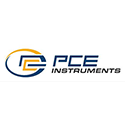


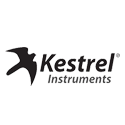


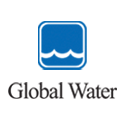


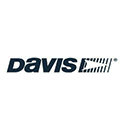
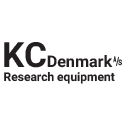

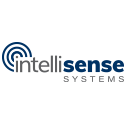

Our commitment goes beyond delivering the highest quality products. We’re committed to partnering with our customers to find the solutions that are the best fit for their needs.
Copyright © 2024 – AKPINSTRUMENTS, All Rights Reserved.